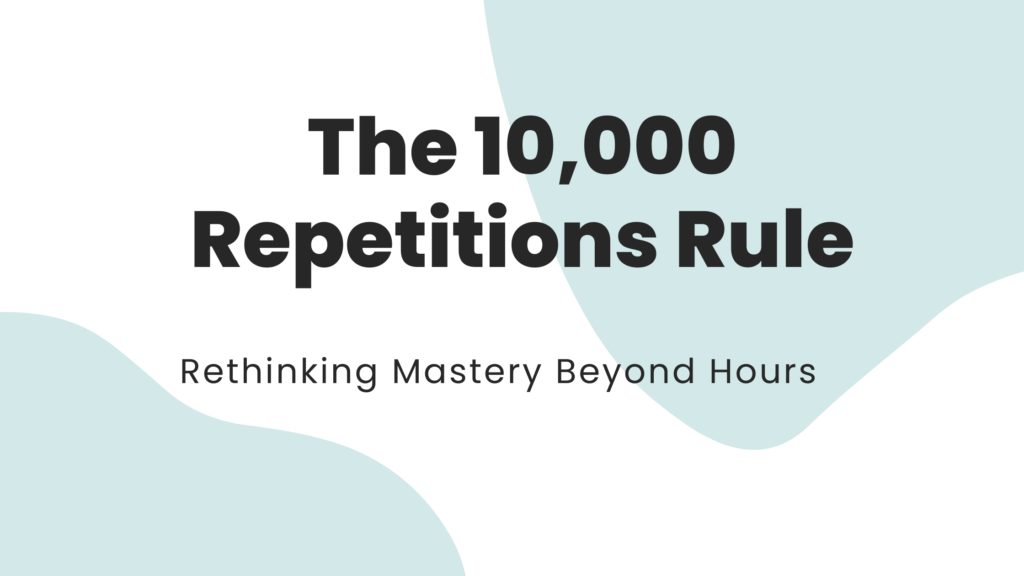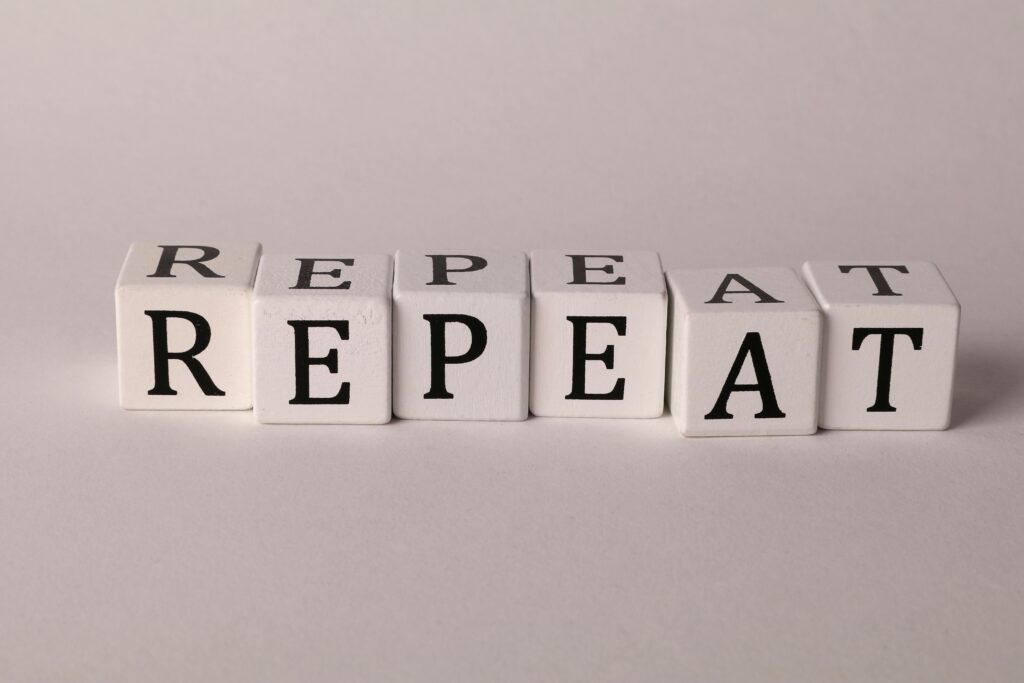
In the world of skill acquisition and mastery, one adage has reigned supreme for decades: the 10,000 hours rule.
Coined by Malcolm Gladwell in his book “Outliers,” this rule suggests that achieving mastery in any field requires approximately 10,000 hours of deliberate practice.
However, it’s time to reconsider this notion and rename it the “10,000 Repetitions Rule.” Here’s why.
Understanding Deliberate Practice
Firstly, let’s clarify what deliberate practice entails. It’s not merely about spending a specific number of hours on a task.
Instead, deliberate practice focuses on intense, focused efforts to improve performance. Whether it’s playing an instrument, honing a sport, or mastering a skill, deliberate practice involves mindful engagement, pushing boundaries, and seeking feedback to refine one’s abilities.
Beyond the Clock: The Fallacy of Hour Counting
One critical flaw in the 10,000 hours rule is its fixation on time rather than quality of practice.
Consider a tennis player practicing their serve. Merely spending an hour on the court doesn’t equate to an hour of continuous, effective serve practice. There are breaks, water sips, ball retrievals, and moments of rest interspersed throughout.
The Importance of Repetitions
Instead of counting hours, we should focus on repetitions. Mastery isn’t about the time spent; it’s about the number of meaningful repetitions completed. For the tennis player, it’s about the number of serves practiced, analyzed, and adjusted. Each repetition offers an opportunity for refinement and growth.

Logging Progress: What Worked, What Didn’t, and What’s Next
To truly harness the power of repetition, it’s crucial to log progress systematically. After each practice session, reflect on what worked well, what didn’t yield desired results, and what adjustments should be made next time. This iterative process ensures that each repetition contributes to skill development.
Renaming the Rule: The 10,000 Repetitions Rule
Given the emphasis on deliberate practice and repetitions, it’s time to rename the rule. The “10,000 Repetitions Rule” accurately reflects the essence of mastery—a journey marked by focused repetitions and continuous improvement.
Conclusion
In conclusion, mastery isn’t about clocking 10,000 hours of practice; it’s about embracing the power of repetitions. By shifting our focus from hours to deliberate, focused practice sessions and logging progress effectively, we can accelerate skill acquisition and achieve true mastery in any endeavor. So, let’s embrace the 10,000 Repetitions Rule and embark on the path to excellence, one mindful repetition at a time.